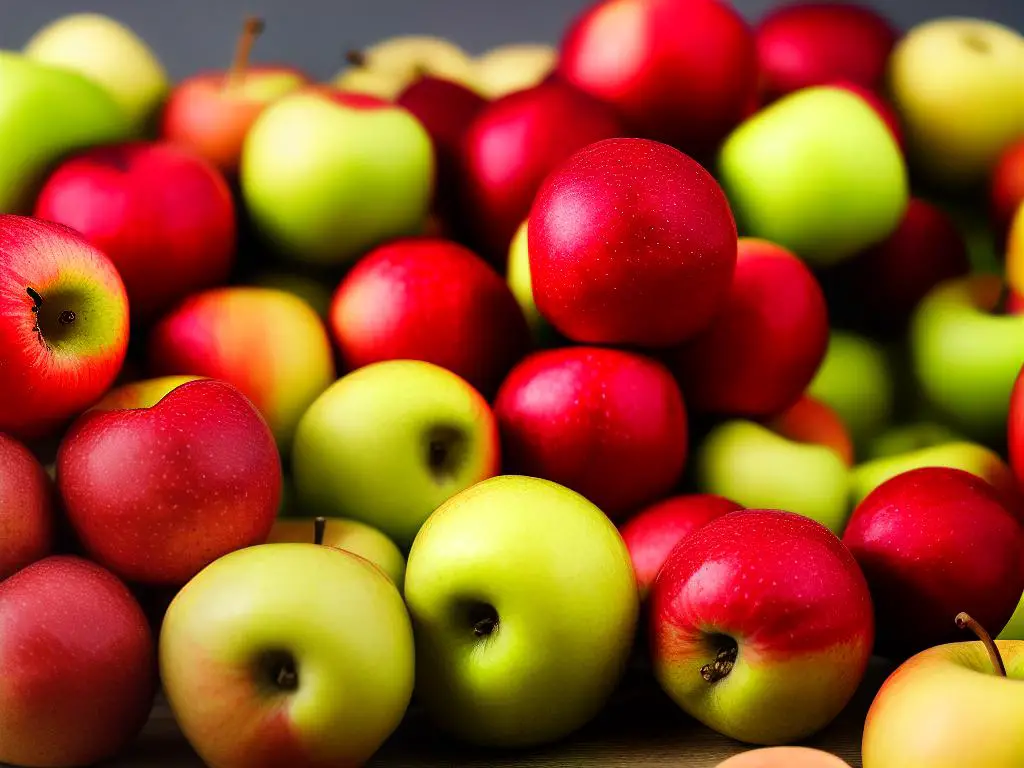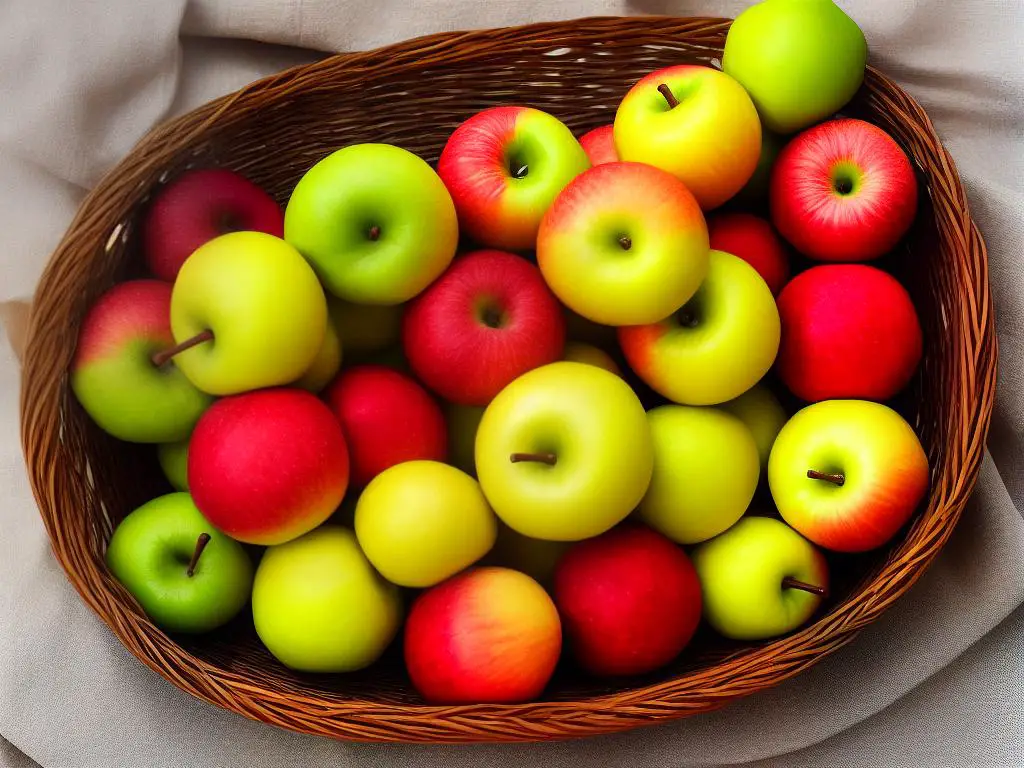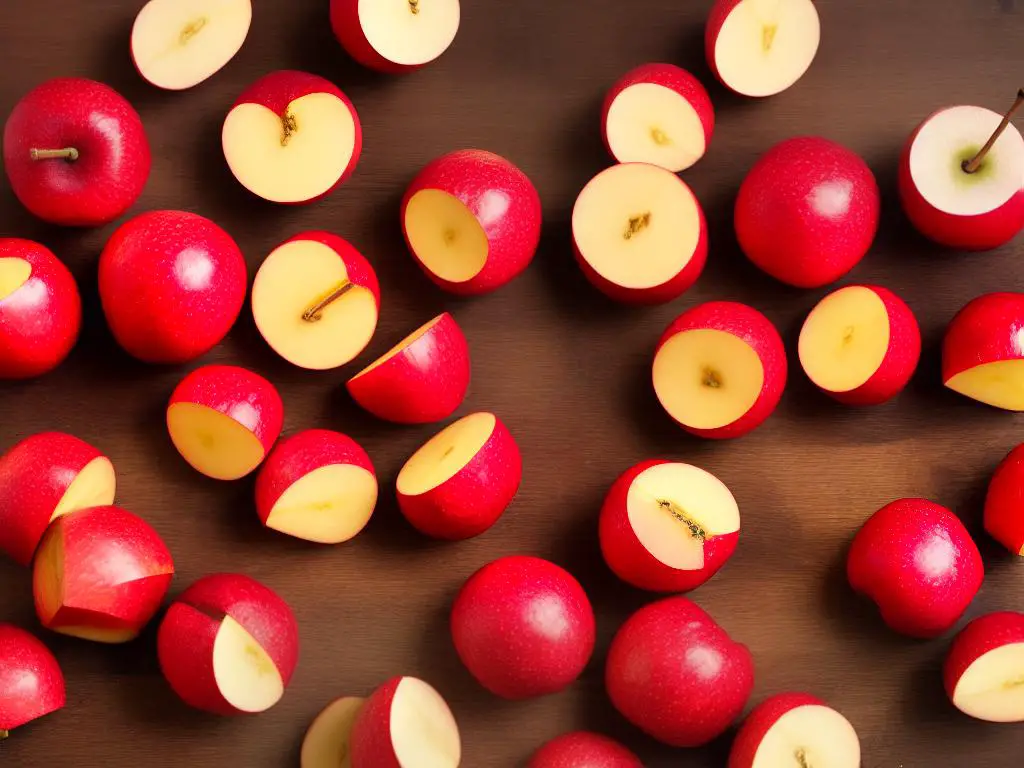The versatile, nutritious, and utterly delicious Sweetie Apple is undeniably one of the gifts Mother Nature offers to us. While it may be just one variety in the great expanse of apple cultivars, it stands out with its unique characteristics and flavour profiles, from its origin to its varied uses and outstanding nutritional benefits. A deep dive into the world of Sweetie Apples not only tickles your taste buds but also enhances your understanding of its role in maintaining a healthy lifestyle and how it fits in an array of culinary concoctions.
Sweetie Apples: Origin and Characteristics
Sweetie Apples, also known as SweeTango
Sweetie apples, also known as SweeTango, have gained a reputable name in the apple industry for their unique flavor profile and crispy texture. They were introduced in the market by the University of Minnesota in 2009 and have been cherished by apple enthusiasts ever since.
Sweetie Apples: Origin and Cultivation
Born from a controlled cross between the Honeycrisp and Zestar varieties, Sweetie apples thrive in cold climates where their rich flavors are able to develop fully. As a product of the University of Minnesota’s Apple Breeding program, the apple variety blooms late, allowing growers to dodge dangerous spring frosts. The University has an exclusive club of growers distributed across the northern hemisphere dedicated to the production of Sweetie apples. This has facilitated its widespread distribution, with Sweetie apples now grown in several locations across the United States and Canada.
Physical Characteristics of Sweetie Apples
Sweetie apples are medium to large-sized apples with a bright, ruby-red skin that often show yellow undertones. They are named for their high natural sugars, providing a seriously sweet flavor profile that still maintains a vibrant, tangy kick. The flesh of a Sweetie apple is succulent and crisp, making every bite a refreshing, juicy experience.
That’s not all – Sweetie apples also give off an invigorating, aromatic scent that adds to the overall sensory experience of enjoying the fruit. Their distinct flavor, texture, and aroma set them apart from many other apple varieties.
The Growth of Sweetie Apple Trees and Harvesting
Sweetie apple trees prefer a sunny location, and like many fruit trees, they need well-draining soil. The trees have a moderate growth rate and typically bear fruit a few years after planting. They grow best in hardiness zones 4 through 7, even withstanding the harsh winter conditions of the USA’s Northern Plains and Midwest.
When it comes to harvesting, Sweetie apples are typically ripe for picking in early to mid-September. To ensure the best flavor and consistency, these apples are carefully handpicked at the peak of their ripeness. After picking, the apples naturally stay fresh for a long time, maintaining their crisp texture and intense flavors.
A Closer Look at Sweetie Apples
For those with a penchant for apples, Sweetie apples offer a unique experience with their special mix of sweetness and tang. Their ability to grow swiftly in cooler climates has made them a preferred variety among apple cultivators. These characteristics give Sweetie apples a leading edge in the apple market, captivating many with their distinctive taste and robust growth.

Health Benefits of Sweetie Apples
Sweetie Apples: Combining Flavor and Health
As a variant of Malus domestica, Sweetie apples provide an exceptional balance of sweet and tart, setting them apart with a unique taste that many find irresistible. Originating from the lush landscapes of New Zealand, Sweetie apples are a hybrid of Royal Gala and Braeburn apples. They boast a striking red hue, with hints of green or yellow visible, influenced by their level of ripeness.
Nutritional Values of Sweetie Apples
One of the primary reasons why Sweetie apples stand out in the field of nutrition is due to their high fiber content. One average-sized Sweetie apple provides approximately 4 grams of dietary fiber, fulfilling around 16% of the daily fiber requirement for women, and 11% for men. This high fiber content promotes healthy digestion and plays a key role in weight management.
Sweetie apples are also low in calories, with a medium-sized sweetie apple containing only about 52 calories. This makes them an excellent snacking option for those looking to maintain or lose weight.
A Sweetie apple also provides about 14% of the daily recommended intake of Vitamin C, an essential nutrient that boosts immunity, promotes skin health, and enhances iron absorption.
Major Health Benefits of Sweetie Apples
Sweetie apples have antioxidants like flavonoids and polyphenols that contribute to heart health. These antioxidants are known to reduce inflammation, lower blood pressure, and decrease the risk of stroke.
The fiber and water content in Sweetie apples also help in maintaining a healthy digestive system by preventing constipation and promoting regular bowel movements.
Sweetie apples are also great for diabetics. The fructose found in these apples is a natural sugar that has a minimal effect on blood sugar levels. Moreover, the fiber in these apples slows down the absorption of sugars into the bloodstream, preventing spikes in blood sugar.
Adding Sweetie apples to the diet not only satisfies sweet cravings but also contributes to overall health and wellbeing. Their unique blend of nutrients and antioxidants makes them a powerful weapon in disease prevention and health promotion.
Final Thoughts
Although Sweetie apples might just seem like another delicious fruit to add to your diet, these sweet treats bring much to the table in terms of nutritional value. Packed with essential vitamins, minerals, and dietary fibers, they offer numerous health advantages ranging from improved digestive functions to the prevention of various diseases. Irrespective of whether you’re pursuing a healthier diet, aiming for weight loss, or simply searching for a nutrient-loaded and tasty treat, incorporating Sweetie apples into your diet could be a game-changing choice.

Use of Sweetie Apples in Culinary World
The Role of Sweetie Apples in Gourmet Society
Cherished for their matchless blend of sweet and tart undertones and their distinctive crunch, Sweetie apples have secured an esteemed spot in the world of gastronomy. This apple hybrid, a result of cross-breeding the Royal Gala and Braeburn varieties, boasts an eye-catching bright red hue touched occasionally by golden specks. The enticing experience provided by their moist, crunchy, and richly sweet taste makes them an ideal choice for an extensive range of delightful sweet, savory dishes and refreshing beverages, ensuring they can be enjoyed by everyone.
Sweet Dishes with Sweetie Apples
Due to their natural sugar content, Sweetie apples are an excellent choice for a plethora of sweet dishes. Desserts and baked goods such as apple pies, crumbles, tarts, and cakes all benefit from the Sweetie apple’s unique sweetness. Apple jam, apple butter, cider doughnuts, and candied apples also shine with the addition of Sweetie apples, adding a gourmet quality to the dishes. Their robust flavor ensures that the apple taste is never lost, no matter how many spices or flavors are added in these sweet concoctions.
Savory Dishes with Sweetie Apples
Meanwhile, the savory fraction of the culinary world also has its fair use of Sweetie apples. Their sweetness provides an excellent counterpoint to robust, savory flavors. Sweetie apples can be served with robust meats like pork or duck for a delightful contrast in flavors, or used in chutneys to accompany cheese platters. They can bring a delightful crunch and sweetness to salads or be used in savory tarts or galettes as they hold their shape well during cooking.
Apple-Based Beverages with Sweetie Apples
In the realm of beverages, Sweetie apples’ flavors are versatile enough to be enjoyed in several drinks. This apple variety works wonders in fresh juices, cocktails, ciders, and even in hot beverages like spiced apple tea or apple-infused hot chocolate. Of course, these apples can also be consumed fresh, providing a natural and healthy alternative for a snack or side dish.
Typically, Sweetie apples mature in early fall and carry a long shelf life. As their seasonality matches brilliantly with cooler weather, incorporating them into seasonal recipes further enhances the appeal of autumn and winter meals.
Not limited to North America, Sweetie apples have found their way into global kitchens, offering epicureans the chance to experiment and delight in the natural sweetness of this delightful apple variety. Their use in the culinary world is not only a testament to their unique flavor but also to their incredible versatility.

By offering rich taste profiles and a multitude of health benefits, Sweetie Apples not only satisfy one’s palate but also contribute significantly to one’s well-being. They are an excellent representation of the profound influence of natural foods on our health and the diversity of applications they offer in the culinary world. The Sweetie Apple is not just an apple – it is a treasure trove of nutrients, a star of the kitchen, and a testament to the wonders of nature.